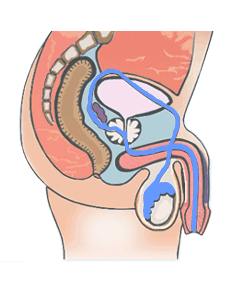| Male Reproductive System | Female Reproductive System |
 |  |
Advertisement
Reproduction is one of the most important and fundamental properties
of living organisms by which every kind of living organism multiplies
to form new individuals of its own kind. In this process, one
generation of living organisms gives rise to the next generation. This
process is not essential to the life of any individual but is a
function essential for the life of the species.
Advertisement
The continuity of life has been possible from the time of its origin,
millions of years ago up to the present day, only due to the phenomenon
of reproduction-in fact, perpetuation of self and of the species is
one of the most remarkable features of living organisms. A species is
a group of related animals, plants or microbes that can interbreed to
produce a fertile offspring. The preservation of species has been made
possible because the parents produce offspring like themselves. It is
also the means of increasing the population of a species. It plays a
major in evolution by transmitting advantageous changes / variations
from organisms of one generation to those of the next.
Advertisement
In human beings, the process is one of sexual reproduction, which
involves both male and female sexes. The new individual or offspring
develops from the fusion cell called zygote, which is formed, by the
fusion or union of two specialized cells called germ cells, sex cells
or gametes.
Generally, one of the gametes is active, smaller in size and without
any reserve food. This is the male gamete and it is called the sperm.
The male reproductive system of a man consists of a pair of testes,
ducts, accessory glands and a penis. The functions of the male
reproductive system are:
1. Production of sperms.
2. Transmission of sperms to the female.
The female reproductive system consists of two ovaries (produce ova
and female hormones), Fallopian tubes, uterus (muscular organ which
supports the fetus during itís 40 week gestation period before
birth), vagina and external genitalia.
The functions of the female reproductive system are: -
1. Production of ovum eggs.
2. Receiving the sperms.
3. Providing suitable environment for fusion (fertilization) of the
egg and the sperm.
4. Child birth.
5. Nourishment of the baby with breast milk until it can take a mixed
diet.

